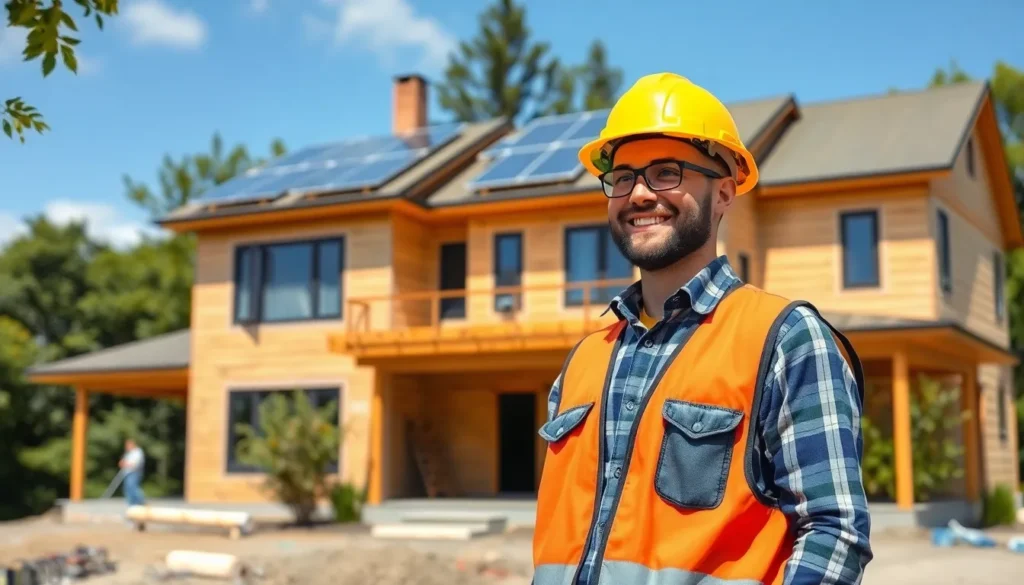Table of Contents
ToggleIn a world that often screams “out with the old, in with the new,” the repair not replace mindset offers a refreshing twist. Imagine a universe where that old toaster gets a second chance instead of being tossed into the abyss of electronic waste. Not only does this approach save money, but it also saves the planet—talk about a win-win!
Understanding the Repair Not Replace Mindset
A “repair not replace” mindset emphasizes fixing rather than discarding items. This approach prioritizes sustainability and resourcefulness in everyday life.
Definition of the Repair Not Replace Mindset
Repair not replace refers to the practice of mending broken or damaged possessions instead of opting for new ones. This mindset encourages individuals to assess the lifespan of products and their potential for repair. By valuing existing items, consumers can foster a culture of sustainability, which leads to more mindful consumption patterns. Evaluating an item’s repairability rather than defaulting to replacement symbolizes a shift in consumer behavior.
Benefits of Adopting This Mindset
Adopting a repair not replace mindset brings numerous benefits. First, it helps reduce electronic waste, which continues to grow with rising technology reliance. Saving money becomes another advantage; repairs often cost significantly less than new products. Individuals often discover skills through the repair process, fostering personal development and creativity. Environmental impact leads the list of considerations, as repairing mitigates resource extraction and promotes a circular economy. Cultivating community ties surfaces as a bonus; sharing repair knowledge can strengthen local relationships.
The Environmental Impact of Repairing
Repairing items significantly reduces waste and pollution. Each year, millions of tons of electronic waste end up in landfills, contributing to soil and water contamination. Repairing devices helps divert this waste and decreases the volume of harmful materials released into the environment. It promotes a cultural shift away from disposability, encouraging people to consider repairing as their first option. Many consumers choose to fix rather than discard, reducing their environmental footprint.
Conservation of resources plays a crucial role in the repair mindset. By opting to repair, individuals contribute to diminished demand for new products and the materials needed to manufacture them. For instance, producing a smartphone requires materials like gold, copper, and rare earth elements. Repairing a phone can save these precious resources from depletion. This practice not only preserves natural resources but also limits energy consumption associated with manufacturing processes. Over time, a collective effort towards repair can lead to significant resource conservation.
Economic Advantages of Repairing
Repairing items often leads to significant cost savings compared to replacements. Consumers spend less money on repairs, particularly for high-value electronics where replacement costs can soar into hundreds or thousands of dollars. Routine maintenance and minor repairs help extend the lifespan of products, enabling individuals to maximize their investments.
Supporting local economies and craftsmen stands as another significant advantage. When individuals choose to repair rather than replace, they often seek out skilled local professionals. This decision fosters community relationships and strengthens the local economy by keeping money within the community. Local craftsmen benefit from increased business, allowing them to thrive and promote traditional skills. Investing in local repair options not only sustains economic growth but also helps preserve valuable craftsmanship. By prioritizing repairs, consumers contribute to a more resilient local economy.
Cultural Shift Towards Repairing
A significant cultural shift emphasizes the importance of repair over replacement. This change highlights the growing recognition of sustainability and resource conservation.
Historical Perspective on Repairing
Historically, repairing items was commonplace, as resources were limited. People relied on their skills to mend goods, ensuring they lasted longer. For decades, household articles, clothing, and tools underwent consistent repairs, fostering a resourceful mentality. The rise of mass production in the mid-20th century shifted this perspective toward disposability. Consumers increasingly sought convenience and instant gratification, leading to widespread waste. Today, a resurgence in the value of repairing brings attention to its environmental and economic benefits. As individuals revisit this essential practice, they also revive skills that nurture self-sufficiency and creativity.
Modern Movements and Initiatives
Modern movements advocate for repairability and sustainability, reflecting societal values. Organizations like Fixers Collective encourage community workshops where people learn to repair various items together. Companies are now embracing design for disassembly, creating products that simplify maintenance. Some cities promote repair cafes, providing spaces for individuals to fix damaged goods with expert guidance. Legislation focused on reinforcing the right to repair is gaining traction, aiming to empower consumers. By prioritizing repair-friendly policies and initiatives, the culture gradually shifts from disposability to sustainability, fostering a future where mending rather than discarding becomes the norm.
Practical Tips for Embracing a Repair Not Replace Mindset
Adopting a repair not replace mindset involves actionable steps at every stage of the consumer journey. Here are some practical tips for successfully embracing this approach.
Identifying Items Worth Repairing
Choosing which items to repair starts with assessing their condition and value. Electronics such as smartphones and laptops often cost significant amounts when purchased new, making them strong candidates for repair. Evaluate the extent of the damage; minor issues like cracked screens or battery failures frequently allow for easy fixes. Clothing items that have sentimental value or are high-quality can also warrant repairs instead of replacements. Heeding signs of obsolescence helps as well; if a product remains functional, consider mending it rather than discarding it. Lastly, weigh the environmental impact of throwing items away, since repairing contributes positively to sustainability efforts.
Finding Repair Services and Resources
Locating repair services requires exploring various community and online resources. Start by checking local listings or community boards for repair shops and independent technicians. Many professionals specialize in electronics, while others focus on clothing alterations or furniture restoration. Exploring social media platforms may lead to local repair groups or community workshops designed for hands-on learning. Online resources like YouTube and DIY websites offer tutorials to guide repairs, too. Additionally, reaching out to friends or family who possess repair skills can provide valuable insights and potential assistance. Participating in repair cafes can also connect individuals with community members passionate about mending over replacing.
Embracing a repair not replace mindset can transform individual habits and contribute to a healthier planet. This approach encourages thoughtful consumption and fosters a culture of sustainability. By prioritizing repairs, individuals not only save money but also reduce waste and support their local economies.
As communities rally around this shift, the benefits extend beyond personal gain. A collective commitment to repairing items strengthens community ties and promotes shared knowledge. Adopting this mindset isn’t just about mending broken possessions; it’s about creating a more sustainable future for everyone.







